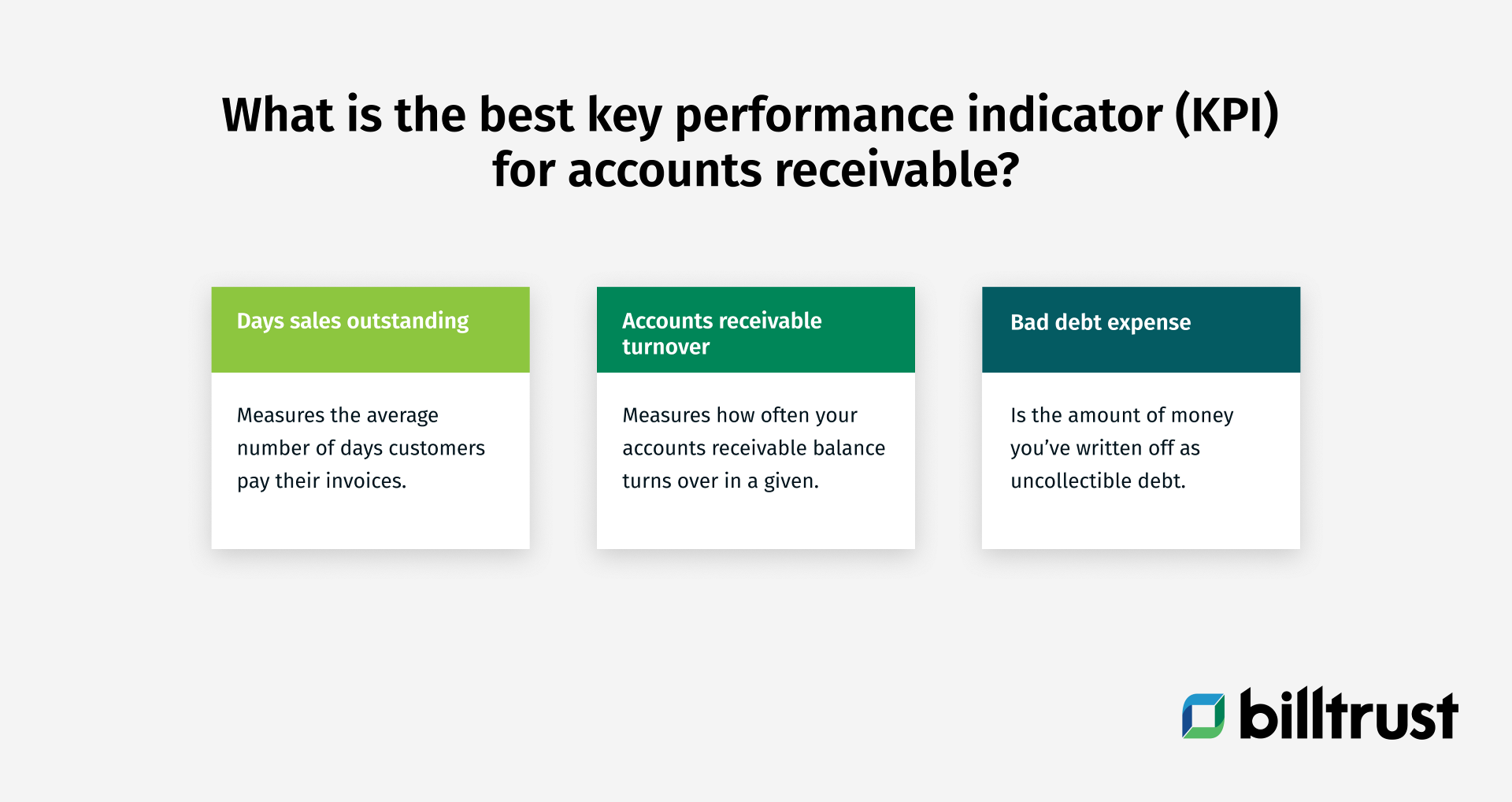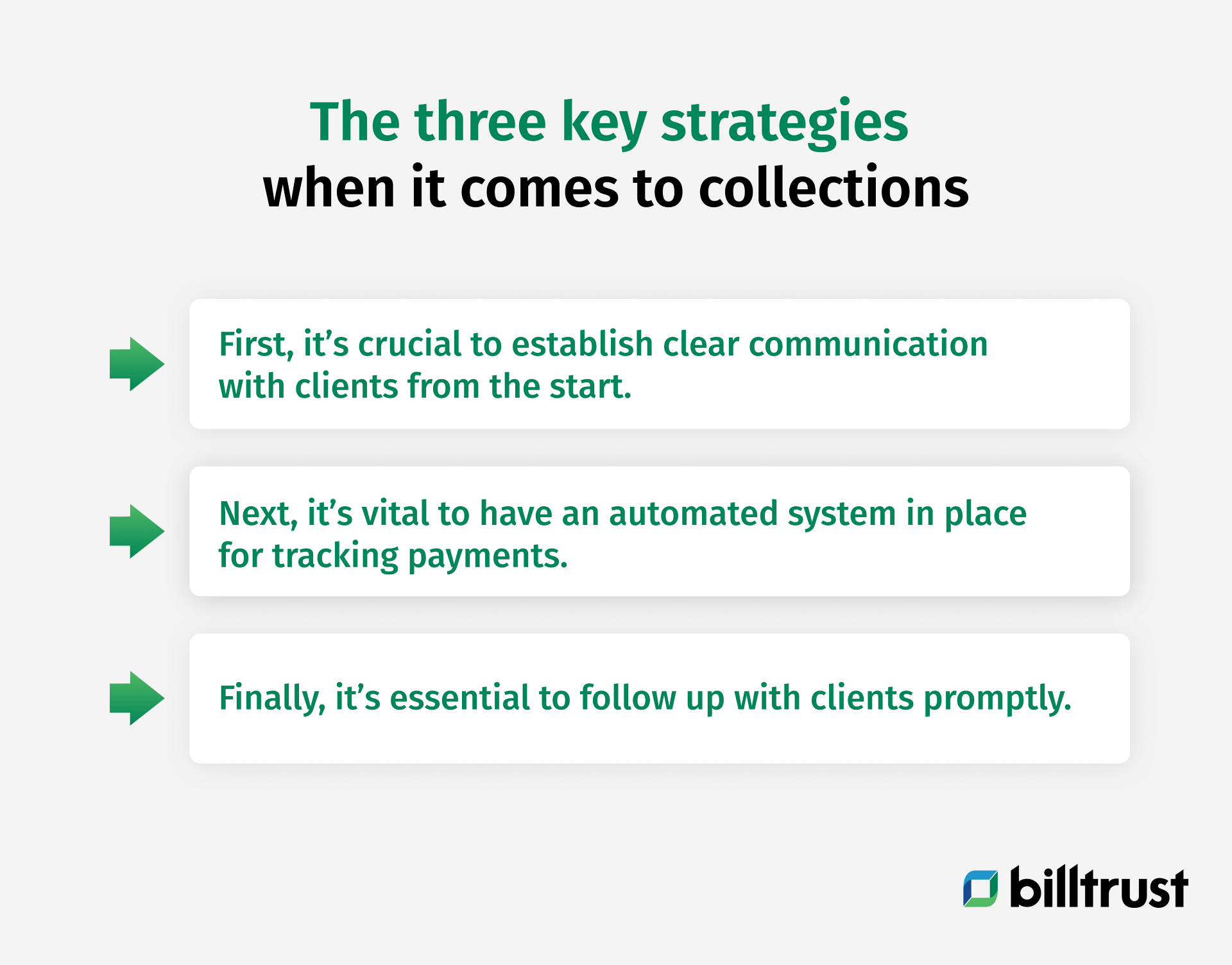Most business owners would agree that having a well-run accounts receivable (AR) department is critical to the success of their company. After all, staying in business is hard if you can't collect the money your customers owe you.
But what are the best strategies for optimizing your accounts receivable to maximize ROI (return on investment)?
Read on for tips on controlling your accounts receivable (AR) and maximizing your ROI today.
What are the primary goals of accounts receivable?
When it comes to business, cash is a high priority. That’s why accounts receivable is such a crucial piece of the puzzle, as well as ensuring that companies promptly receive the money their customers owe. Furthermore, it's why you must have strategies for optimizing your accounts receivable.
But what exactly are the primary goals of accounts receivable?
In short, they include three key objectives: maximizing cash flow, minimizing bad debt, and maintaining customer satisfaction.
- Maximizing cash flow is essential for keeping businesses afloat and ensuring they have the resources to meet their obligations.
- Minimizing bad debt, on the other hand, helps businesses to avoid write-offs and keep their bottom line healthy.
- Finally, maintaining customer satisfaction ensures repeat business and positive word-of-mouth. In other words, happy customers are more likely to pay on time and less likely to default on their payments.
You can maintain your accounts receivable department like a well-oiled machine by meeting these three goals.
What is the best KPI for accounts receivable?
There's no one-size-fits-all answer to this question. The best KPI (key performance indicator) for accounts receivable will vary depending on the specific business and its importance. However, there are a couple of meaningful key metrics when it comes to accounts receivable:
Days sales outstanding
One common metric is days sales outstanding (DSO), which measures the average number of days customers pay their invoices. This can be a helpful metric to track because it can give you an idea of how quickly your customers pay their invoices.
Accounts receivable turnover
Another essential metric is accounts receivable turnover rate, which measures how often your accounts receivable balance turns over in a given period. This can be a good indicator of the efficiency of your accounts receivable collections process.
Bad debt expense
Bad debt expense is the amount of money you’ve written off as uncollectible debt. As high bad debt expense means losing money on delinquent accounts, so keeping this number as low as possible is essential.
Ultimately, the best KPIs for your accounts receivable will vary depending on your specific business and what's important to you. However, tracking metrics like DSO and ART (accounts receivable turnover) can give you a good understanding of your accounts receivable health.

10 accounts receivable optimization goals you should accomplish
Accounts receivable is one of any business's most essential and complex aspects. You must collect payments as efficiently as possible while providing excellent customer service.
Here are 10 AR optimization goals you should strive to accomplish:
- Keep track of how much money your customers owe you at all times. This might seem like a no-brainer, but it's essential to have a clear picture of your accounts receivable at all times. This information will help you make informed decisions about chasing down late payments and offer payment terms that are fair to both parties.
- Reduce the number of overdue invoices. This is one of the most critical goals regarding accounts receivable. The less money outstanding, the better flow will be. One way to achieve this is by sending reminders once an invoice becomes overdue.
- Offer multiple payment options. Some customers prefer to pay by credit card, others by check or bank transfer. The more options you offer, customers will likely pay on time.
- Have a straightforward payment policy in place. Customers should know exactly when they need to pay their invoices and the consequences of late payments. This will help them budget accordingly and avoid any misunderstandings down the road.
- Stay on top of collections. This means keeping track of which customers owe you money and following up with them regularly until they pay off their debts.
- Keep accurate records. This includes invoices, payment history, and contact information for each customer. This will come in handy if you ever need to collect or take legal action against a customer who refuses to pay their debts.
- Streamline your invoicing process. The more customers understand their invoices, the more likely they will pay them on time. So make sure your invoices are easy to read and contain no hidden fees or tiny print they can’t read.
- Extend payment terms only when necessary. Sometimes, it may be required to extend payment terms to keep a customer happy. However, it would help if you did this sparingly, as it can negatively impact your cash flow.
- Offer discounts for early payments. Many businesses offer a discount ( e.g. 2% ) for customers who pay their invoices within ten days. This can incentivize customers to pay on time and improve your cash flow.
- Hire a professional collections agency. If all else fails, you may need to hire a professional AR collections agency to help recoup some of your losses. This should be seen as a last resort, as it can damage customer relationships and your business's reputation.
Make sure you take the above into consideration when reviewing strategies for optimizing your accounts receivable.
What are the three key strategies when it comes to collections?
There's more to accounts receivable collection than contacting debtors and hoping they'll pay up. It would help if you employed a few key strategies to maximize your chances of getting paid.
Here are three key strategies when it comes to collections: communication, automation, and promptness.
- First, it’s crucial to establish clear communication with clients from the start. Be upfront about your payment policies and ensure that patients understand their financial responsibility.
- Next, it’s vital to have an automated system in place for tracking payments. If you want to identify which customers are behind on their payments quickly and easily, an automated system can help you take action accordingly.
- Finally, it’s essential to follow up with clients promptly. If a payment is late, don’t hesitate to reach out and remind the patient of their outstanding balance.
By following these simple steps, you can help to ensure that your accounts receivable stay healthy and manageable.

Using technology to automate accounts receivable tasks wherever possible
As any business owner knows, managing accounts receivable can be a time-consuming and tedious task. Fortunately, automated AR software offers many benefits to make the process easier and more efficient.
Some of the key benefits of using automated accounts receivable (AR) software include the following:
- Reduced data entry errors: Accounts receivable automation software can help reduce or eliminate errors in data entry, saving time and money.
- Improved cash flow: By streamlining the invoicing and payments process, you can improve your cash flow and keep better track of your finances.
- Increased efficiency: Automated AR software can help businesses save time by automating invoice generation, payment processing, and collections.
Overall, automated accounts receivable software solutions can offer many critical benefits for businesses of all sizes.

Automation software can help you to optimize your accounts receivable
Optimizing your accounts receivable is crucial to the success of your business, but it can be tough to know where to start. Luckily, there are a variety of strategies for optimizing your accounts receivable that you can utilize to maximize ROI.
By tracking key performance indicators and keeping tabs on important goals, you can ensure that your accounts receivable stay healthy and improve your overall cash flow.
Which strategy will work best for you will depend on several factors, but the most important thing is to get started and keep track of your progress to continue improving.
Download the ultimate guide to digital accounts receivable

The landscape of accounts receivable is rapidly evolving, driven by advancements in AR software. To remain competitive both within your company and in the wider professional sphere, staying ahead of upcoming trends is imperative. This guidebook equips you with the knowledge and tools to seamlessly integrate the future of accounts receivable software into your business operations.

